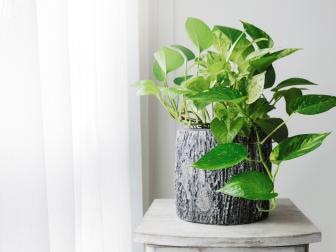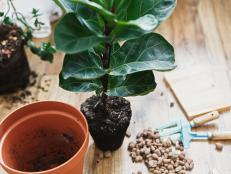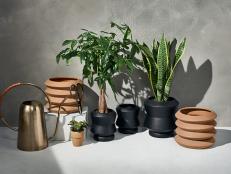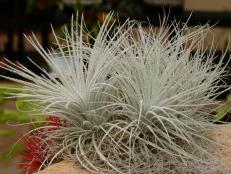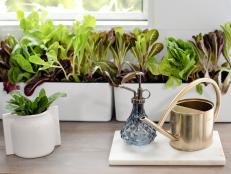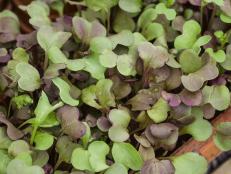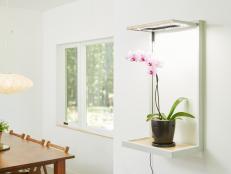How to Repot Houseplants
Rejuvenate indoor and outdoor plants yearly with these step-by-step instructions.
.jpg.rend.hgtvcom.616.616.suffix/1587500704532.jpeg)
Costa Farms
When houseplants outgrow their pots, their root systems may not be able to derive the water and nutrients needed to support the top growth. When that happens, plants tend to become stunted and the older leaves may lose their color and drop. The solution: transplanting the plants to bigger pots. And it's best done in the spring, when roots grow most actively, allowing the plant to quickly overcome the shock associated with repotting.
Not all houseplants need to be repotted every year — some can go for several years without being repotted if they're top-dressed* at least once a year — but you'll notice a big difference in their health if you do take the time to do it every year.
*Editor's note: Top dressing involves removing the top 1-2" of soil in your houseplant pot and adding fresh soil (you can also add some slow release organic fertilizer if you like) to the pot. Be sure to water well after top dressing.
Materials Needed
- new pot (no more than 2 inches in diameter larger than the old pot)
- potting soil
- water
- slow release organic fertilizer
- sharp knife/pruning shears
- coffee filters
How to Repot an Indoor Plant
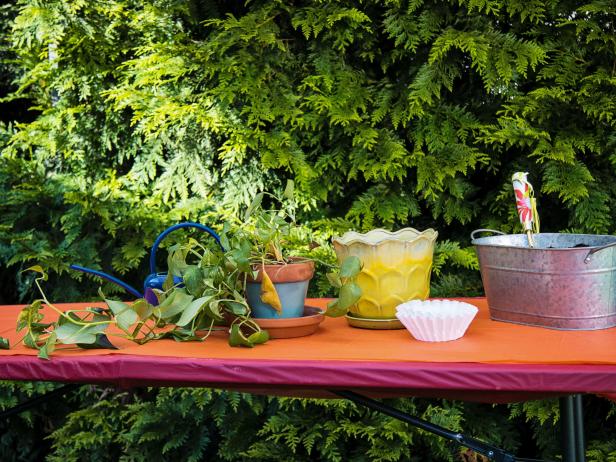
Shain Rievley
You know it's time to repot indoor plants when the roots are growing out the drainage hole, the soil is dried out and water runs off the top. Follow these simple steps to give new life to your houseplant.
Prep Plant and Prepare Pot
Water the plant well three or four days before repotting. Since repotting is a messy job, you might consider tackling the task outdoors. Just make sure the weather is warm enough — at least in the 60s — or the plant may go into shock. Place a coffee filter at the bottom of the new pot (Image 1). This will allow water to filter through without losing soil. Add fresh potting soil to the bottom of the new pot, packing it well around the drainage hole. Invert the pot and gently remove the plant by grasping the main stem. Give it a slight tug and it should slip out of the pot. If it doesn't, use a butter knife or other flat-bladed tool to loosen the sides of the pot and try again (Image 2). Gently loosen roots with your fingers before planting. Transfer the plant to the new pot. Adjust the amount of soil mix so that the plant is at the same level as it was in the old pot (Image 3).
Note: If your plant has roots so thick that you cannot tease them loose (Image 4), cut the bottom of the root ball off. An inch or so is all that should be cut off. If you cut the root ball bottom off, you should also do some trimming on the plant. Using your sharp knife or pruning shears slice through the tangled roots on the sides of the root ball to encourage new root growth (Image 5). These roots will fill the new soil that has been added to the larger container.
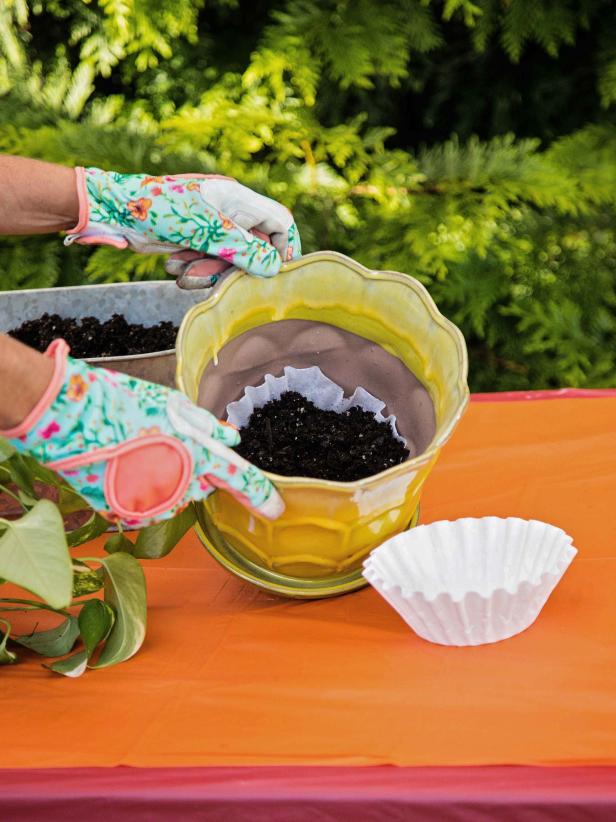
Shain Rievley
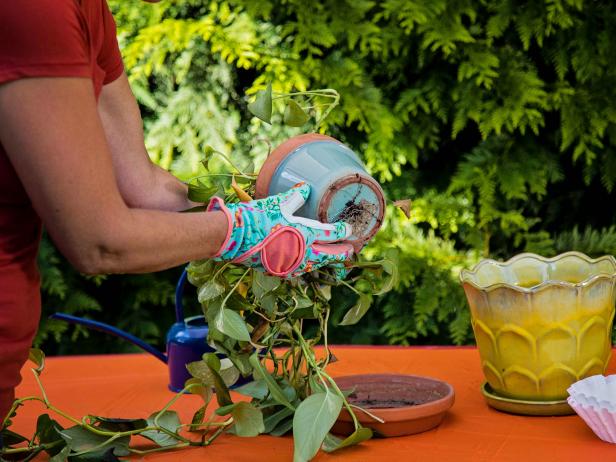
Shain Rievley
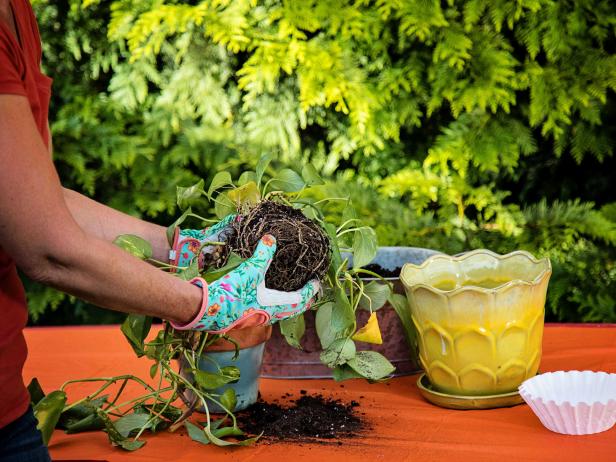
Shain Rievley
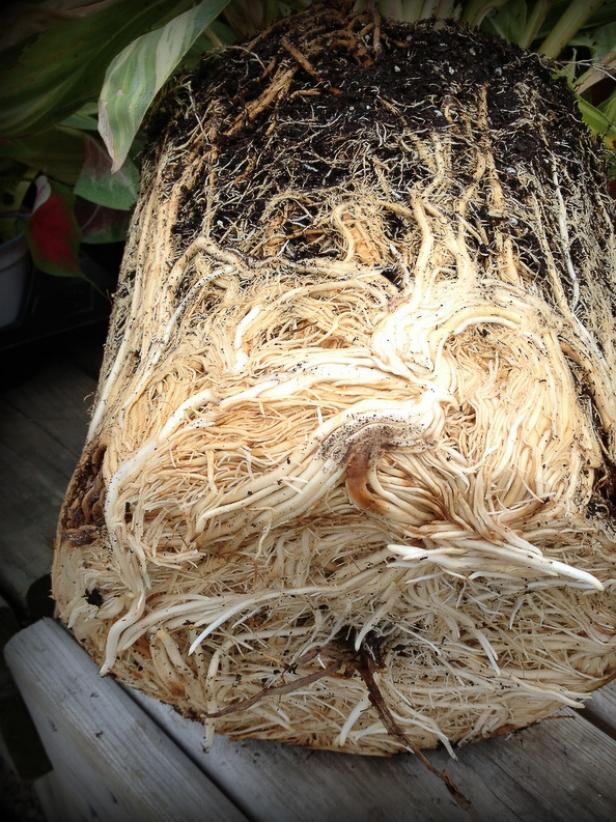
Photo by Lisa Steinkopf
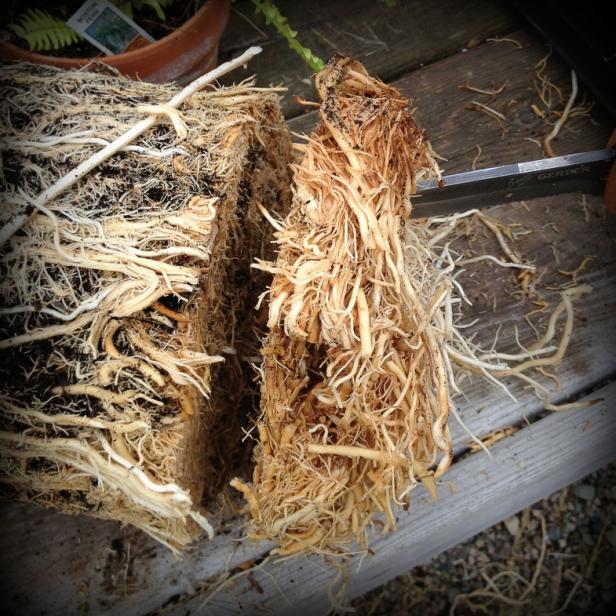
Photo by Lisa Steinkopf
Repot and Water
Fill the remaining space with soil (Image 1) and water your newly potted plant (Image 2). After a plant has been repotted or top-dressed, it may show signs of stress — the most obvious sign is wilting. It's a good idea to keep the plant out of strong light for a week or so to give it a chance to rest and rebound.
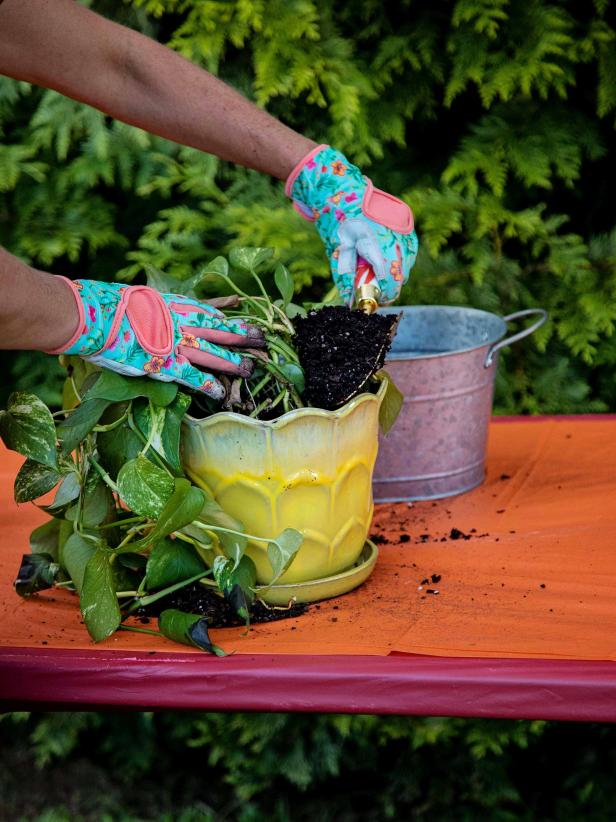
Shain Rievley
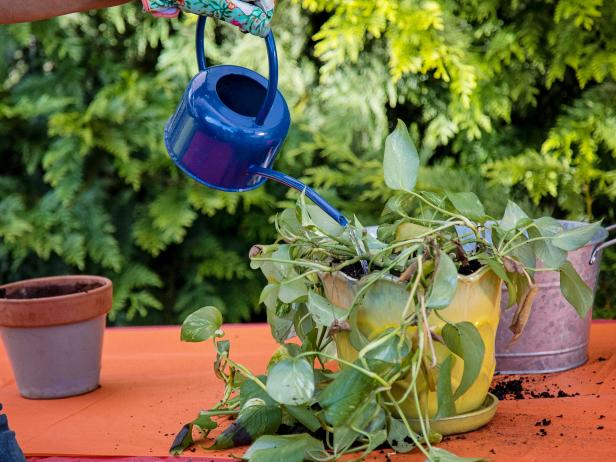
Shain Rievley
How to Repot a Hanging, Outdoor Plant
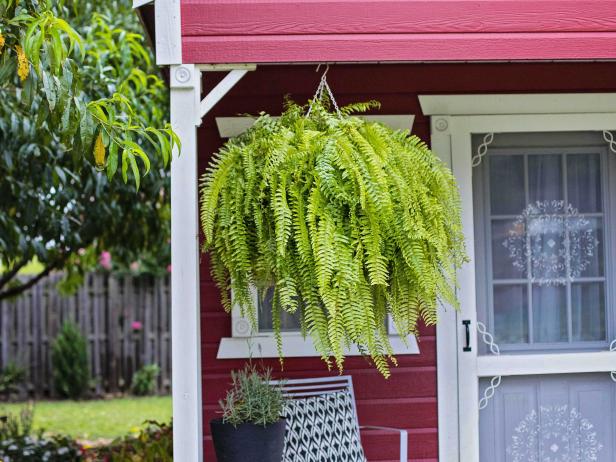
Shain Rievley
You know it's time to repot outdoor plants when water runs straight through and tangled roots surface above the pot.
Remove Pot and Add Soil
Cut the plastic pot until the plant is free (Image 1). Gently remove the plant by grasping the main stem. Give it a slight tug, and it should slip right out (Image 2). If it won't budge, use a butter knife or other flat-bladed tool to loosen the sides of the pot and try again. Add 2-3 inches of fresh potting soil to the new pot. Sprinkle slow-release fertilizer (Image 3) on top. Move soil to the sides to make room for the plant (Image 4). Gently loosen the roots on the bottom of the plant's base (Image 5).
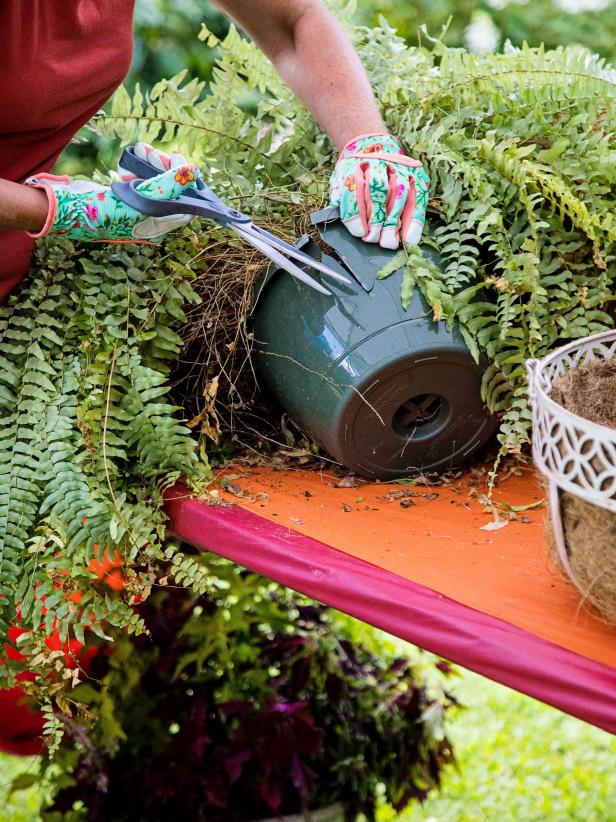
Shain Rievley
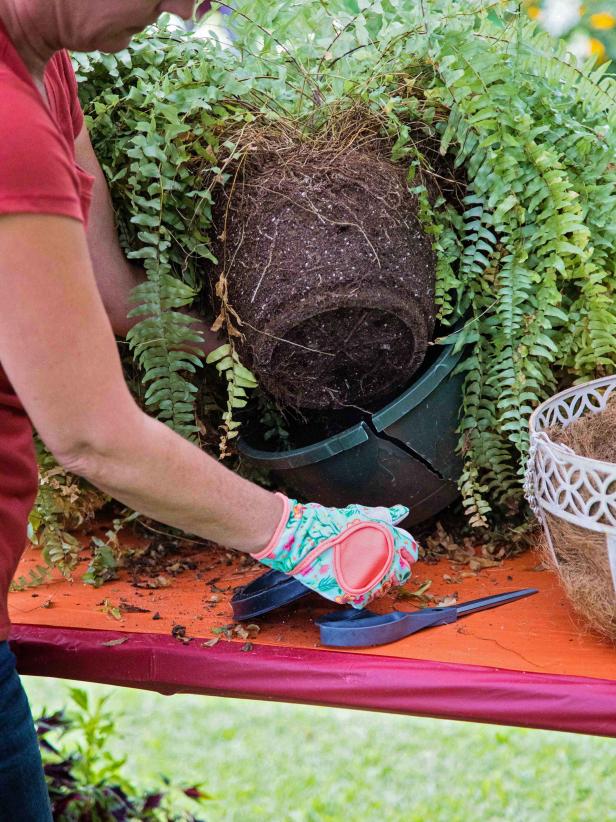
Shain Rievley
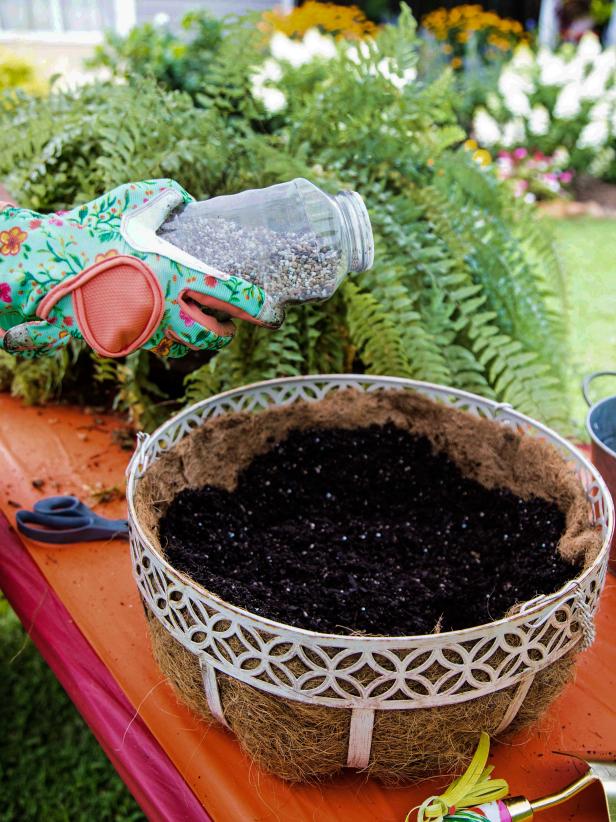
Shain Rievley
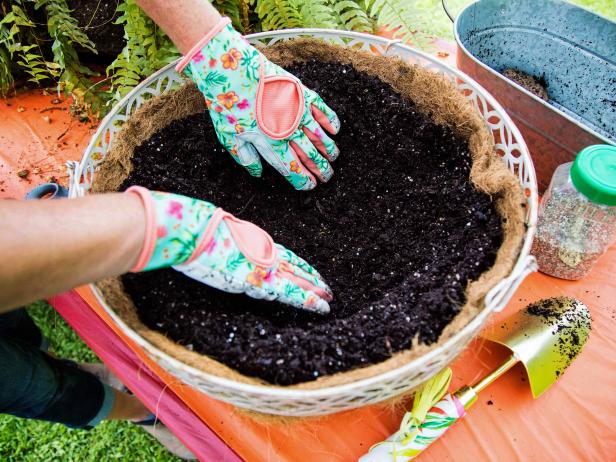
Shain Rievley
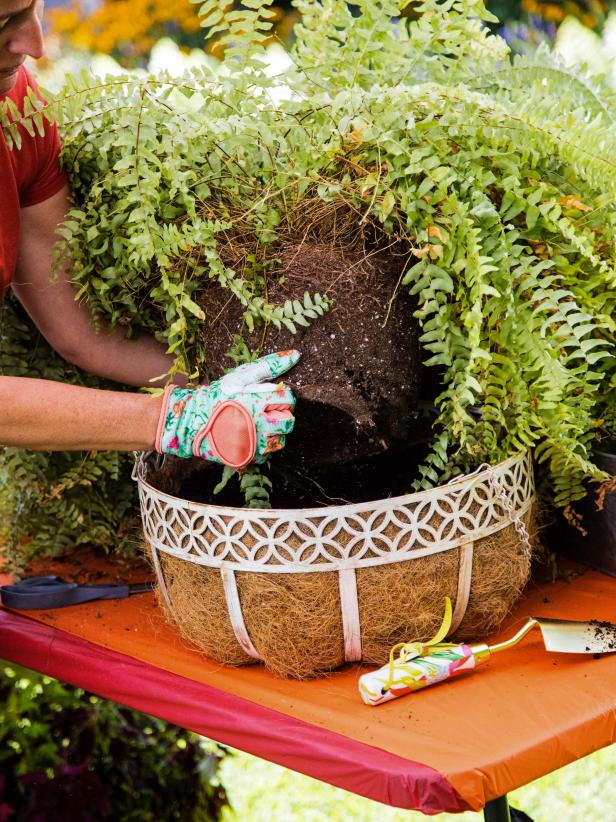
Shain Rievley
Repot Your Plant
Place the plant in the pot and fill the remaining space with potting soil leaving one inch from the top (Image 1). Hang your plant and generously water it (Image 2).
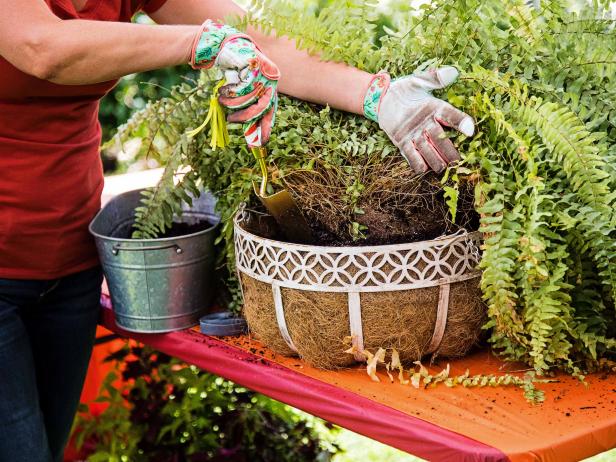
Shain Rievley
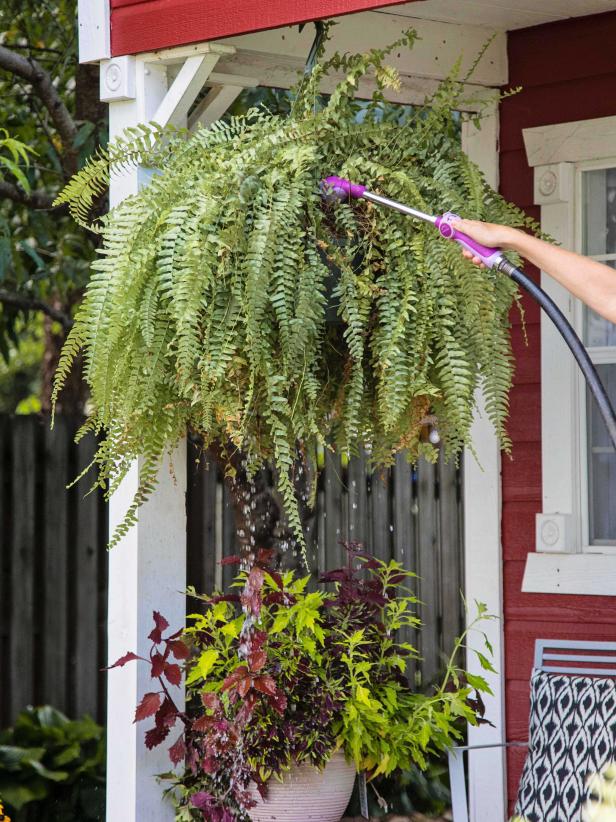
Shain Rievley
Alternative Solutions
If you don't want the plant to grow larger, you can prune its roots instead of repotting. Trim the outer inch or two of roots with a sharp pruner, and place the plant in its original container. Add fresh soil mix to fill the pot and water well. You might also consider pruning the top growth a little so that it's in proportion to the newly downsized root system. Keep in mind, though, that not all plants take well to this method. Avoid pruning top growth on peace lilies, Norfork Island pines, and cacti and other succulents, ferns and other plants that send up leaves directly from the soil line.
And if you have houseplants that are simply too large to repot, such as a banana tree or a sago palm, your best bet is to top-dress them with fresh potting mix.
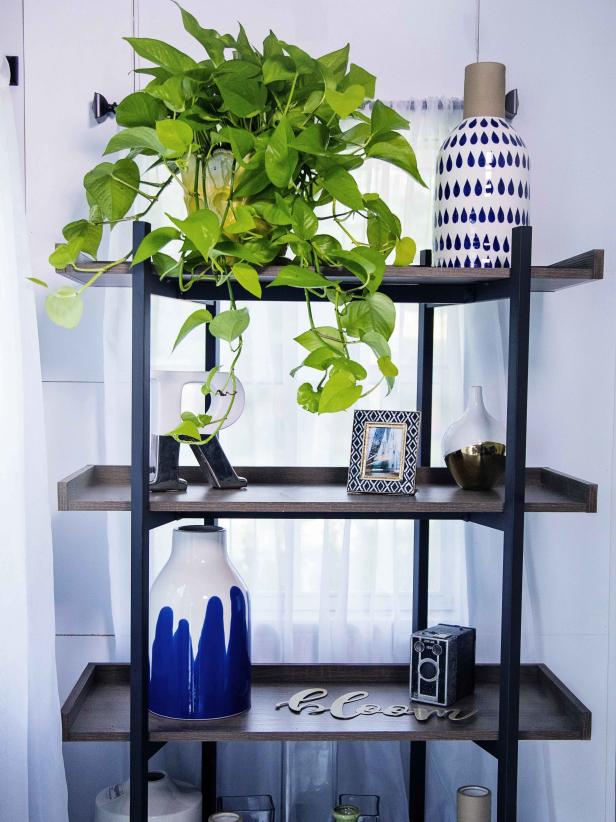
Shain Rievley






